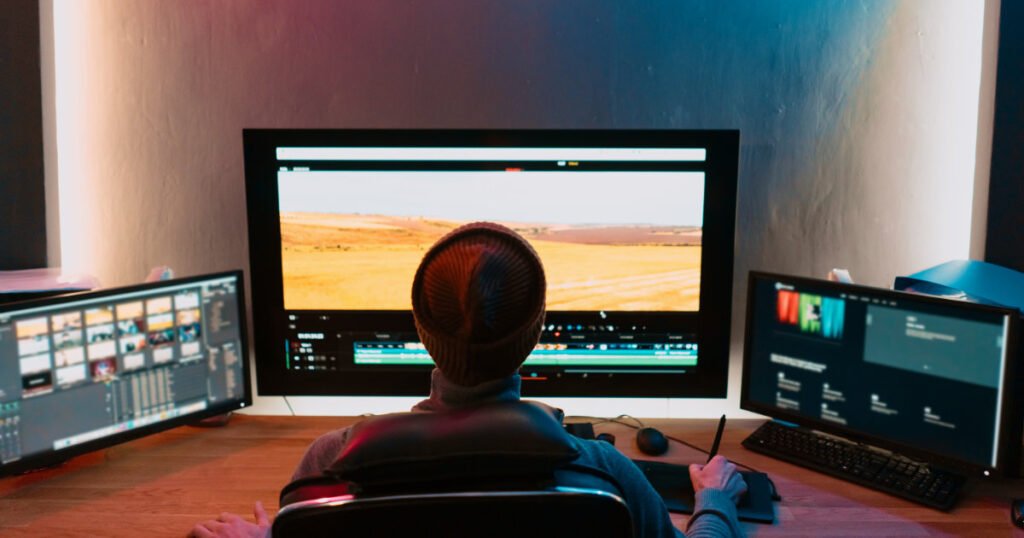How Editing Shapes Storytelling in Film


Hey everyone, let’s dive right into the crux of the matter: How does editing shape storytelling in film? It’s like a magician’s trick, where the real magic happens in the editing room. When we talk about storytelling in cinema, it’s not just about what the script says; it’s about how the story is told visually and emotionally through editing. Narrative editing, montage, and other editing techniques are the secret ingredients that transform a sequence of shots into a compelling story. They say a film is made three times: when it’s written, when it’s shot, and when it’s edited. It’s this last step where the story truly comes to life.
The Magic of Narrative Editing: Unveiling the Storyteller’s Invisible Art
You know, narrative editing isn’t just about cutting and splicing footage. It’s an art form, a way of weaving the visual tapestry of a film. It’s all about timing, pacing, and the seamless transition from one scene to another. Imagine you’re a chef, and your ingredients are all these shots and scenes. Narrative editing is how you cook up a story that’s both tasty and memorable. It’s like you’re guiding the viewer’s eye and emotions, showing them what to feel and when to feel it. That’s the real power of storytelling in editing.
Montage: More Than Just a Series of Shots
Alright, let’s talk montage. It’s not just a quick way to show the passage of time. It’s a storytelling powerhouse! Think Rocky’s training sequence – it’s iconic, right? Montages compress time and amplify emotion, delivering a punch that can move the story forward at lightning speed. It’s all about juxtaposing images to create a new meaning, something that neither shot could achieve on its own. A well-crafted montage can tell a whole chapter of a story in just a few minutes.
The Emotional Rhythm: How Editing Affects Viewer Experience
Now, let’s get into the rhythm of the story. Just like music, films have a rhythm, and editing is the drumbeat. Fast cuts, slow cuts, lingering shots – they all play a part in how a viewer feels. It’s like you’re a DJ, mixing the beats of the story to get the emotional response you want. You speed things up to create tension, or slow things down to let the audience soak in a moment. This rhythm, this pacing, it’s essential for keeping the audience engaged and emotionally invested.
The Unseen Editor: Crafting Stories Behind the Scenes
Here’s the thing about great editing – if it’s done right, you barely notice it. Editors are like the unsung heroes of filmmaking, working their magic behind the scenes. They’re the ones who take all the raw footage and sculpt it into the story that eventually hits the screen. Their choices – what to show, what to hide, when to cut – these decisions shape the narrative in profound ways. A skilled editor can turn a good film into a masterpiece, all while remaining virtually invisible.
Montage Techniques
- Juxtaposition: Placing contrasting shots next to each other to create a new meaning.
- Temporal Compression: Showing a lengthy process in a brief span of time.
- Emotional Amplification: Using a series of images to heighten the emotional impact.
Narrative Editing Essentials
- Pacing: Finding the right tempo for each scene.
- Continuity: Ensuring a seamless flow of action.
- Timing: Deciding the perfect moment for a cut.
In summary, editing isn’t just a post-production task. It’s an integral part of storytelling in film. Whether it’s through the rhythm of narrative editing, the emotional punch of a montage, or the subtle art of maintaining continuity, editing shapes the way we experience stories on the big screen. It’s the final, crucial step where all the elements of a film come together to create something greater than the sum of its parts.
So, there you have it, folks. We’ve just scratched the surface of how editing shapes storytelling in film. Remember, every cut, every transition, every decision made in the editing room plays a pivotal role in how a story is told and received. It’s an art form that requires a keen eye, a sense of rhythm, and a deep understanding of narrative. Next time you watch a film, take a moment to appreciate the work of the unseen artist – the editor – who weaves the visual story and keeps us hooked till the end. Keep experimenting, keep editing, and most importantly, keep storytelling!
Discover how specific editing techniques can bring different film genres to life. Dive into a world where each cut, each transition, tells a unique story tailored to the genre it inhabits.

Responses